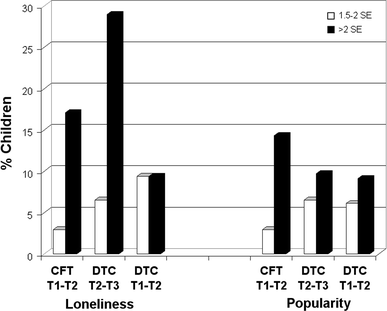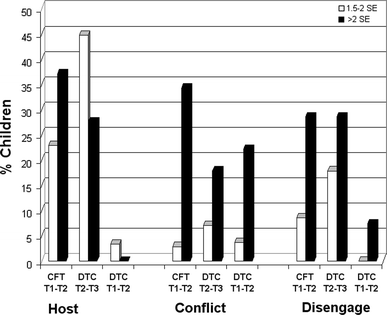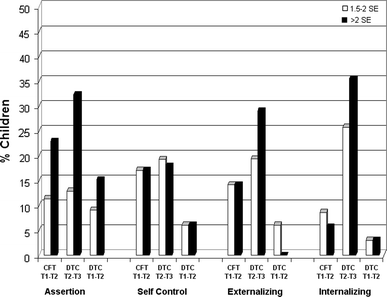A randomized controlled study of parent-assisted Children's Friendship Training with children having autism spectrum disorders
- PMID: 20058059
- PMCID: PMC2890979
- DOI: 10.1007/s10803-009-0932-z
A randomized controlled study of parent-assisted Children's Friendship Training with children having autism spectrum disorders
Erratum in
- J Autism Dev Disord. 2010 Jul;40(7):843
Abstract
This study evaluated Children's Friendship Training (CFT), a manualized parent-assisted intervention to improve social skills among second to fifth grade children with autism spectrum disorders. Comparison was made with a delayed treatment control group (DTC). Targeted skills included conversational skills, peer entry skills, developing friendship networks, good sportsmanship, good host behavior during play dates, and handling teasing. At post-testing, the CFT group was superior to the DTC group on parent measures of social skill and play date behavior, and child measures of popularity and loneliness, At 3-month follow-up, parent measures showed significant improvement from baseline. Post-hoc analysis indicated more than 87% of children receiving CFT showed reliable change on at least one measure at post-test and 66.7% after 3 months follow-up.
Figures



References
-
- Asher SR, Hymel S, Renshaw PD. Loneliness in children. Child Development. 1984;55:1456–1464. doi: 10.2307/1130015. - DOI
-
- Attwood T. Strategies for improving the social integration of children with Asperger syndrome. Autism. 2000;4:85–100. doi: 10.1177/1362361300004001006. - DOI
-
- Badenes LV, Estevan RAC, Bacete JG. Theory of mind and peer rejection at school. Social Development. 2000;9:271–283. doi: 10.1111/1467-9507.00125. - DOI

